Imagining a thoughtful retail experience centered on psilocybin tea and consumer needs.
Moosh, A Responsible Approach to Psychedelic Retail
Moosh is an immersive retail experience designed to educate and guide consumers through the purchase and consumption of psychedelic mushrooms. By blending strategic foresight, spatial design, and user research, we created a concept that balances safety, accessibility, and cultural authenticity. Through a successful pilot, we validated demand, optimized the customer journey, and explored opportunities for future scalability in the evolving psychedelic space.
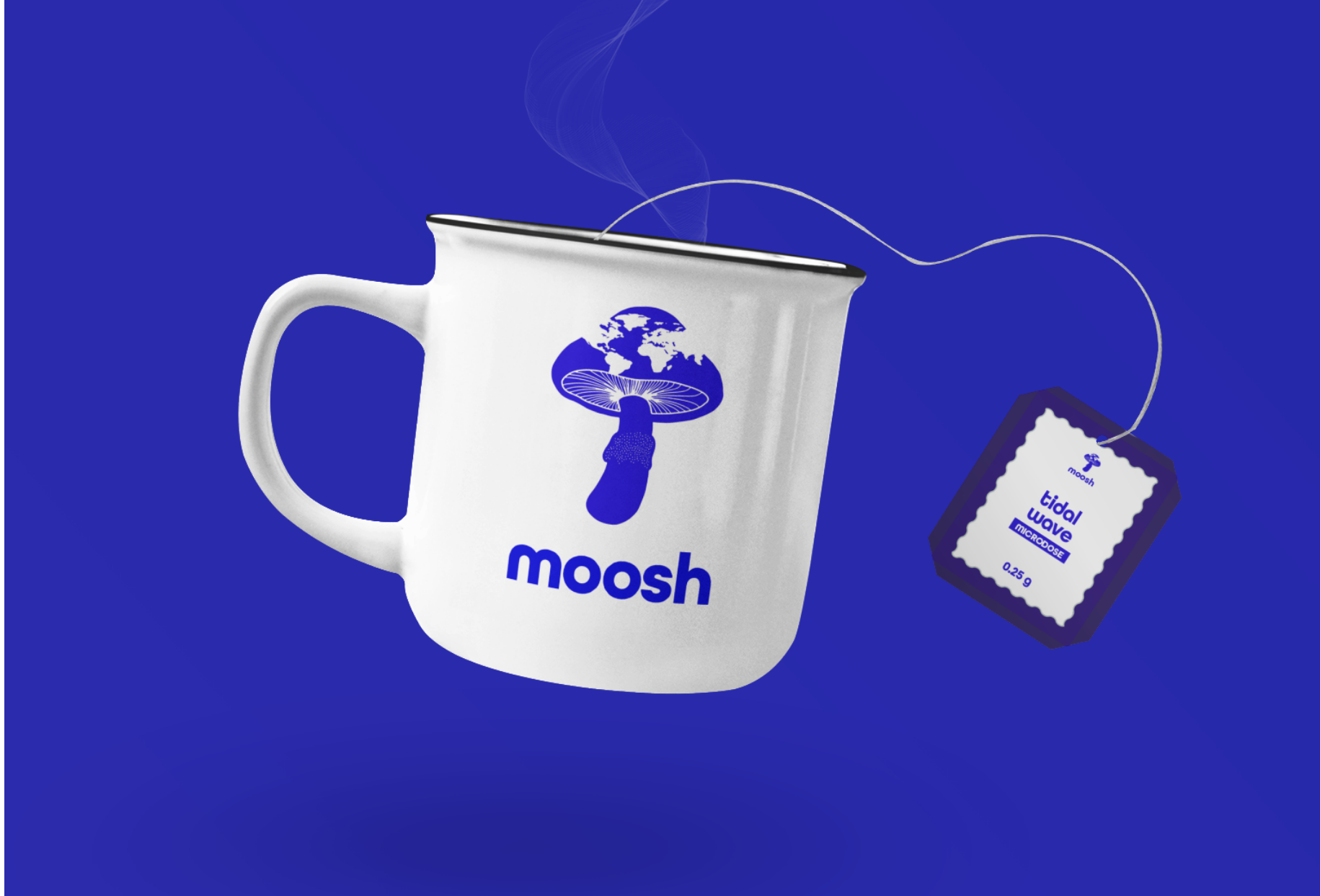
My Role
Problem Definition
With psilocybin decriminalization in California, there is a growing need for responsible education and consumer guidance around psilocybin mushrooms. The industry lacks structured retail experiences that balances safety, education, and accessibility. The challenge was to design a retail concept that informed and guided consumers while maintaining the cultural authenticity of psilocybin use.
Experience Designer
Led the conceptualization and execution of a holistic retail journey.
Applied speculative design and strategic foresight to anticipate market trends and industry shifts.
Developed the "warm medical" brand identity, ensuring credibility and approachability through visual design, messaging, and spatial layout.
Conducted in-depth user interviews, competitive analysis, and iterative testing to refine the customer experience.
Project Manager
Oversaw team collaboration, ensuring alignment between strategy, design, and execution.
Facilitated rapid prototyping and pilot testing to validate key experience touchpoints.
Solution
Moosh creates a guided, immersive retail experience that responsibly educates consumers on psychedelic mushrooms through multi-sensory engagement, personalized consultations, and strategic design. The experience integrates key elements to enhance trust, accessibility, and informed decision-making:
Key Features
Curated Retail Journey – Designed a physical-first, interactive experience to ensure authenticity and consumer confidence.
Personalized Consultations – Developed a guided approach with trip advisors to help customers navigate strain selection, dosage, and responsible use.
Multi-Sensory Engagement – Integrated tactile, visual, and narrative-driven elements (e.g., the “Alice in Wonderland” welcome tunnel) to create an engaging, educational experience.
Harm Reduction & Safety Features – Designed trip-planning tools, emergency contact integration, and microdosing trackers to support safe use.
Impact
Successfully tested the concept with 50+ participants, validating consumer interest and refining key experience touchpoints.
Developed a distinctive "warm medical" brand identity, balancing credibility with approachability.
Optimized user journeys and spatial design to enhance engagement and accessibility.
Validated key experience elements through usability testing, shaping future iterations, including potential digital integration.
Explored scalability opportunities, identifying pathways for regulatory alignment and an expanded retail model.
Key Learnings
Multi-sensory experiences enhance engagement – Using familiar narratives like “Alice in Wonderland” increased participant comfort and curiosity.
Physical-first design aligns with psychedelic culture – Prioritizing an in-person experience over digital UX ensured authenticity and accessibility.
User testing validated key experience touchpoints – Elements like the Moosh Passport and personalized consultations were most impactful for first-time users.
Teamwork and adaptability were critical – Navigating legal and logistical challenges required flexibility and diverse perspectives.
Strategic foresight is essential in emerging industries – The pilot demonstrated potential for a scalable retail model while highlighting opportunities for regulatory alignment and digital expansion.
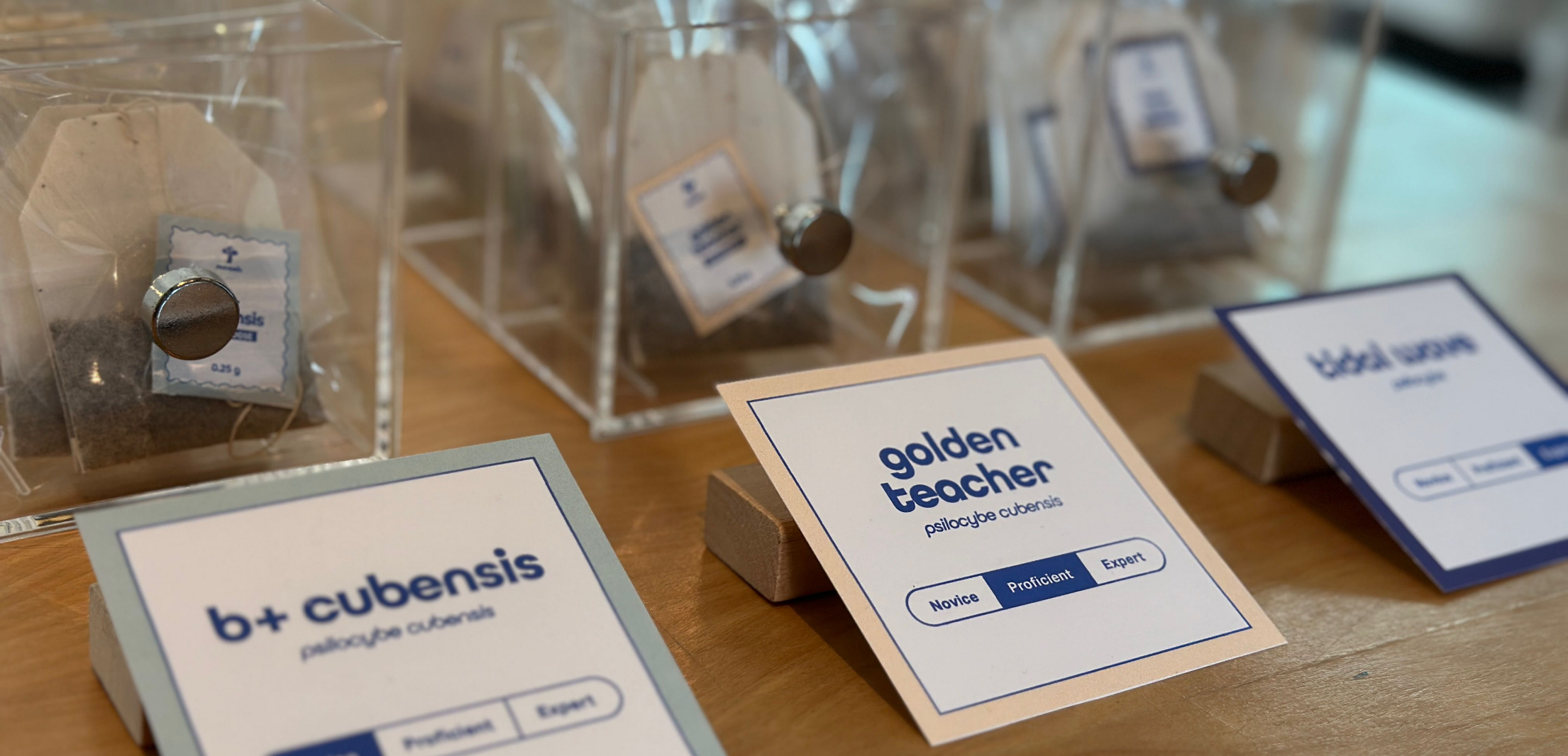
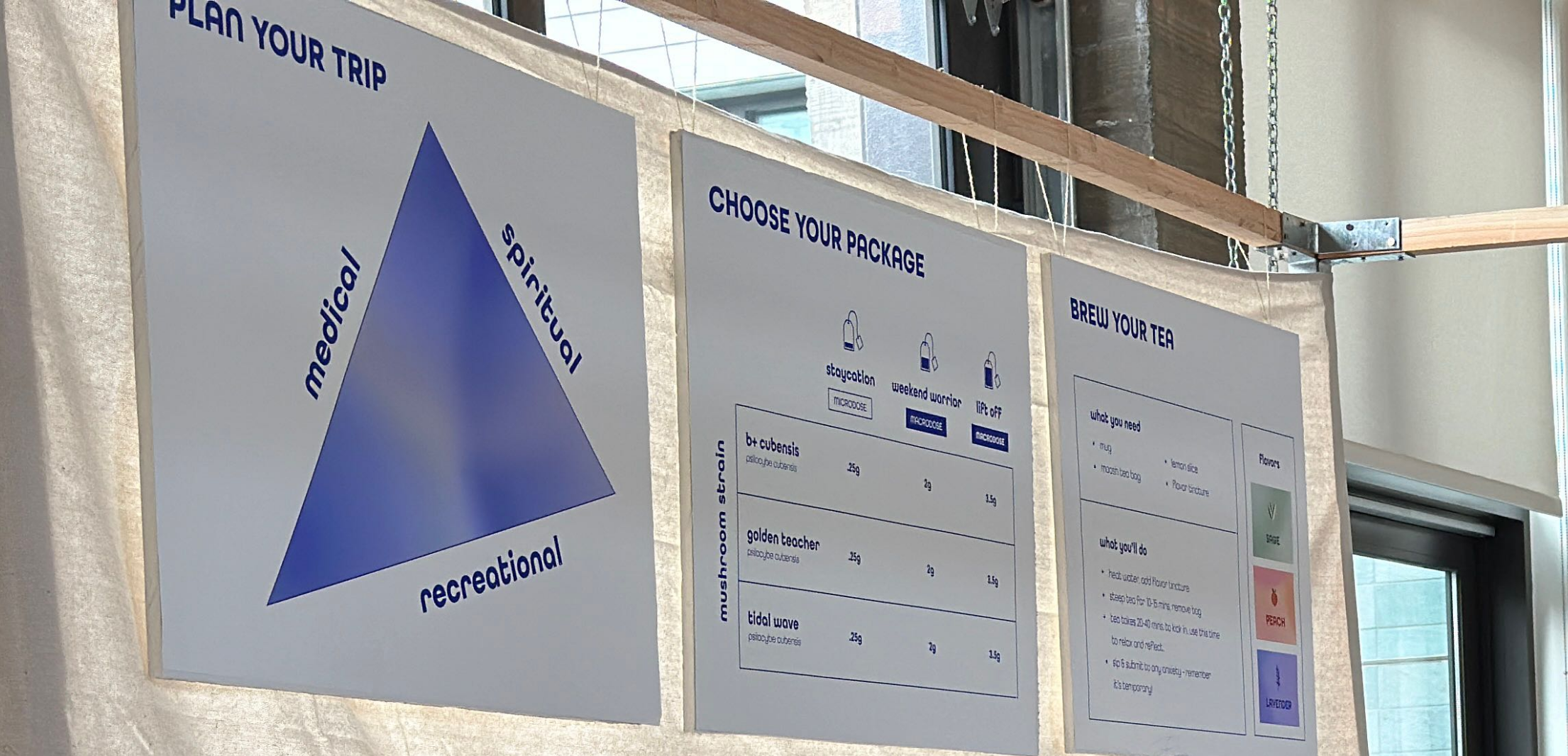



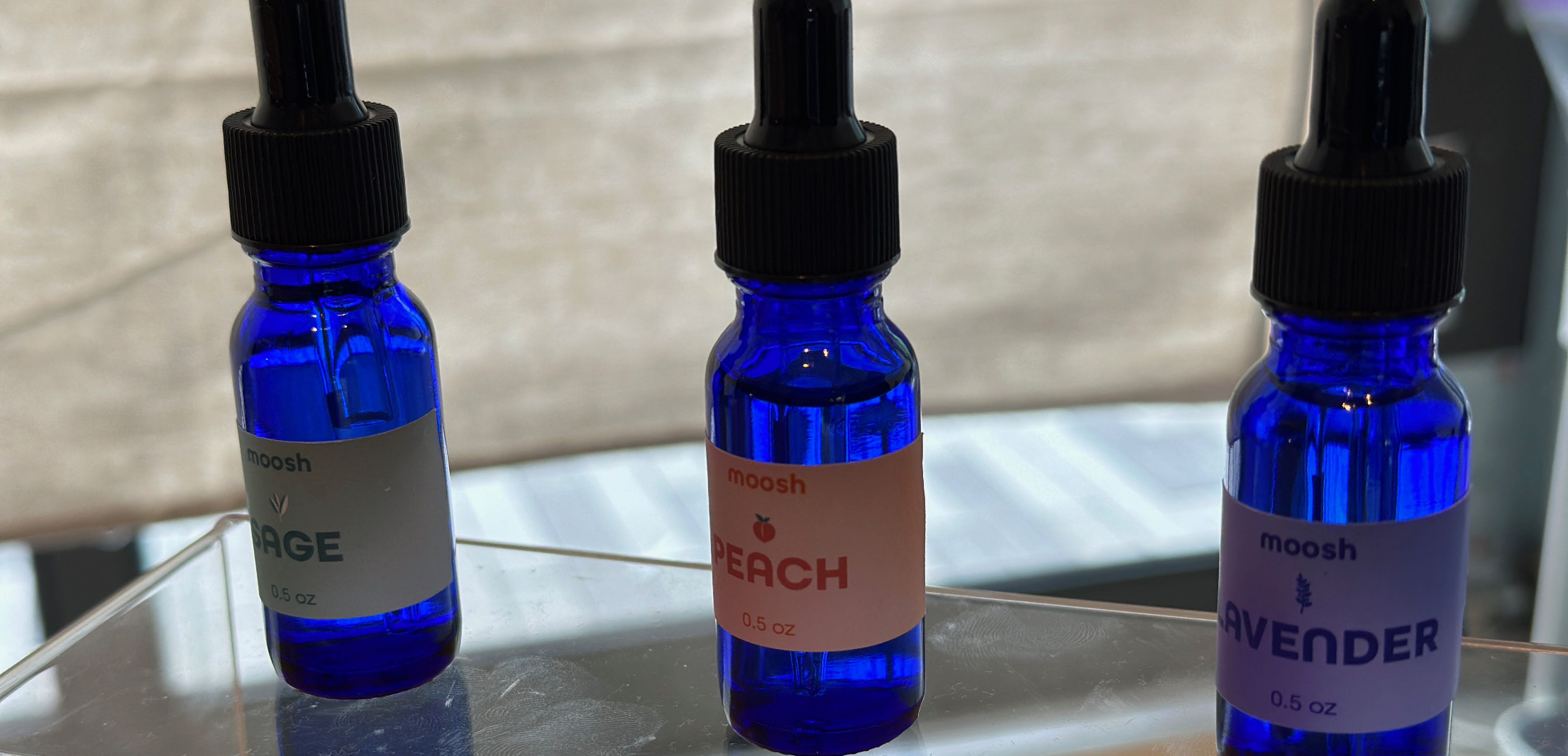
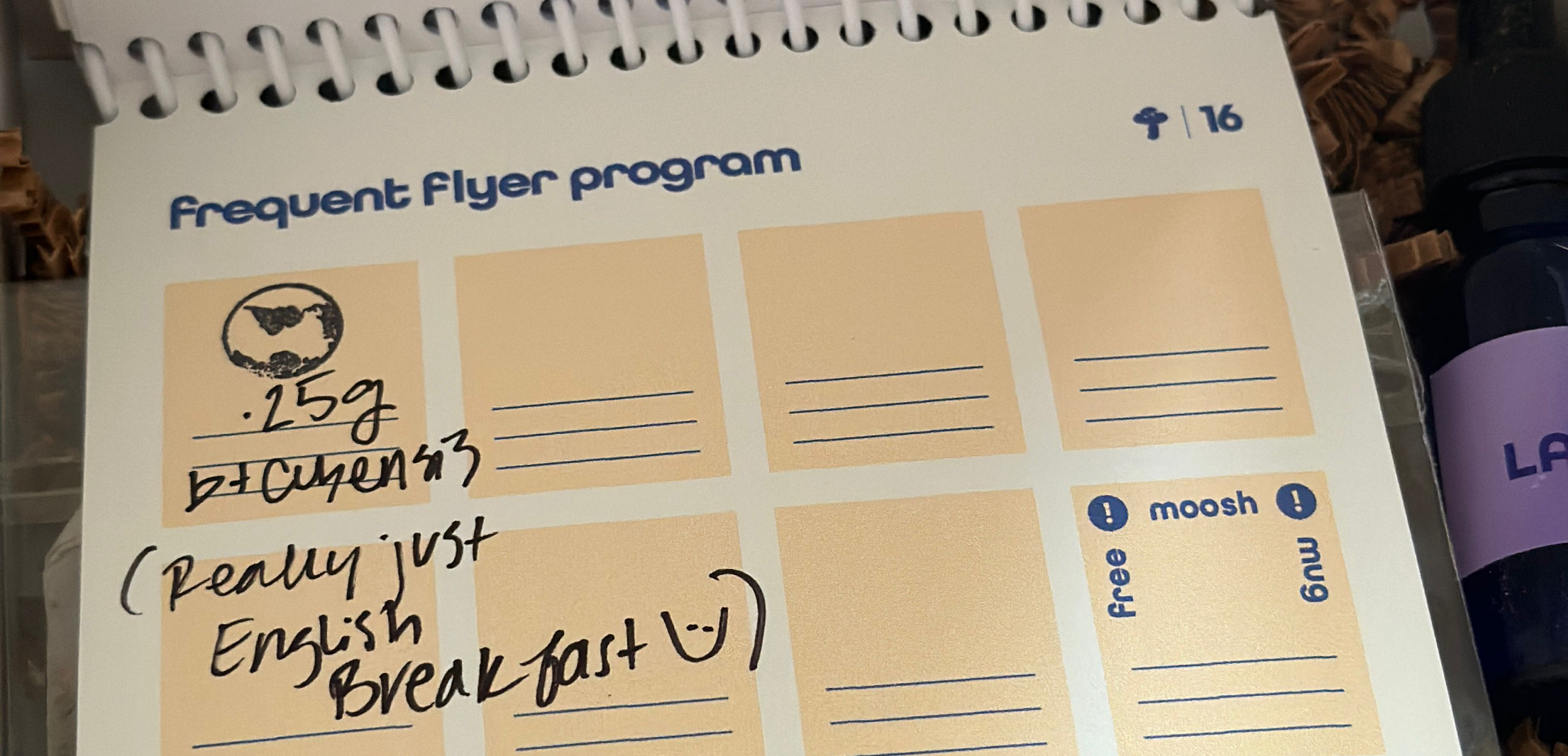
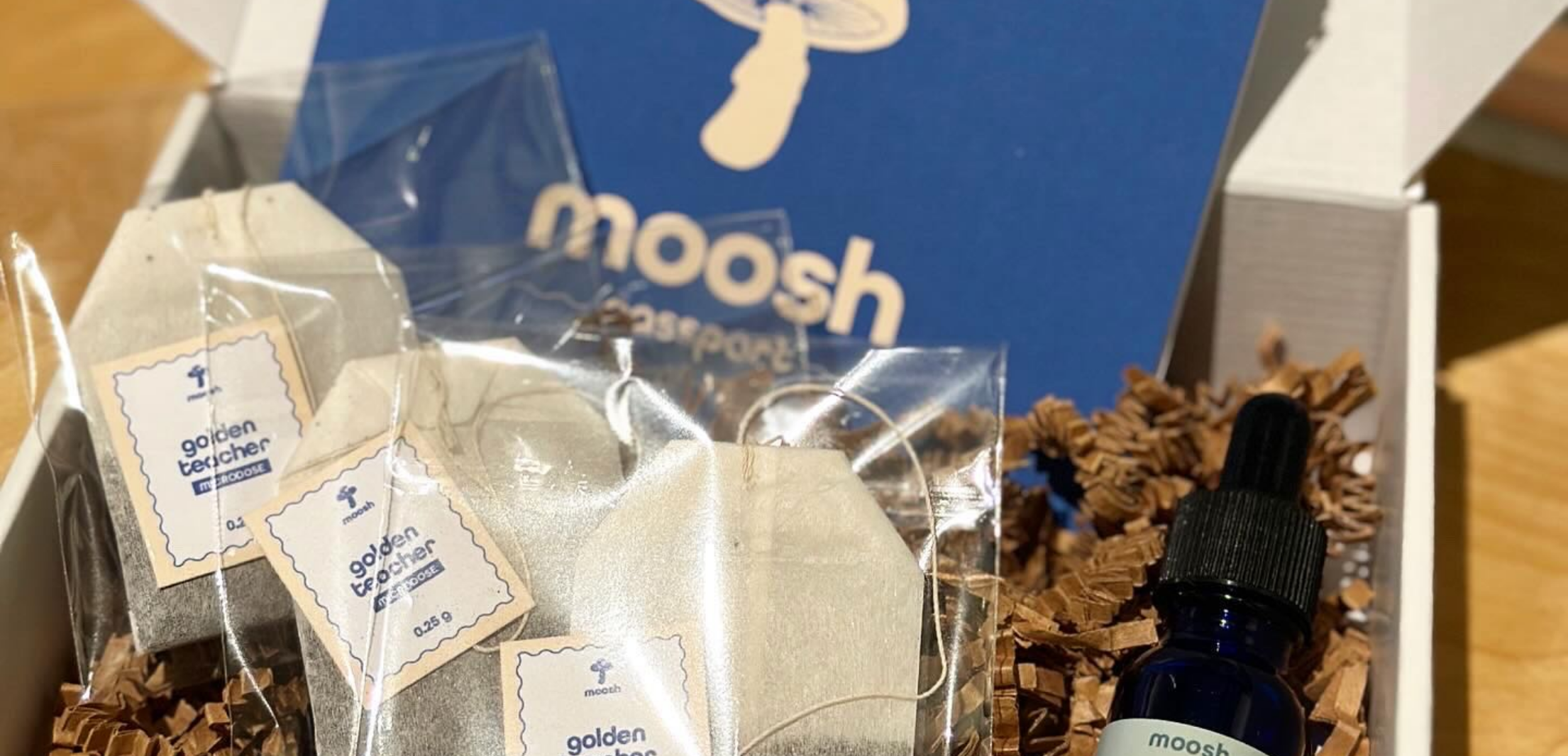
Key Touchpoints
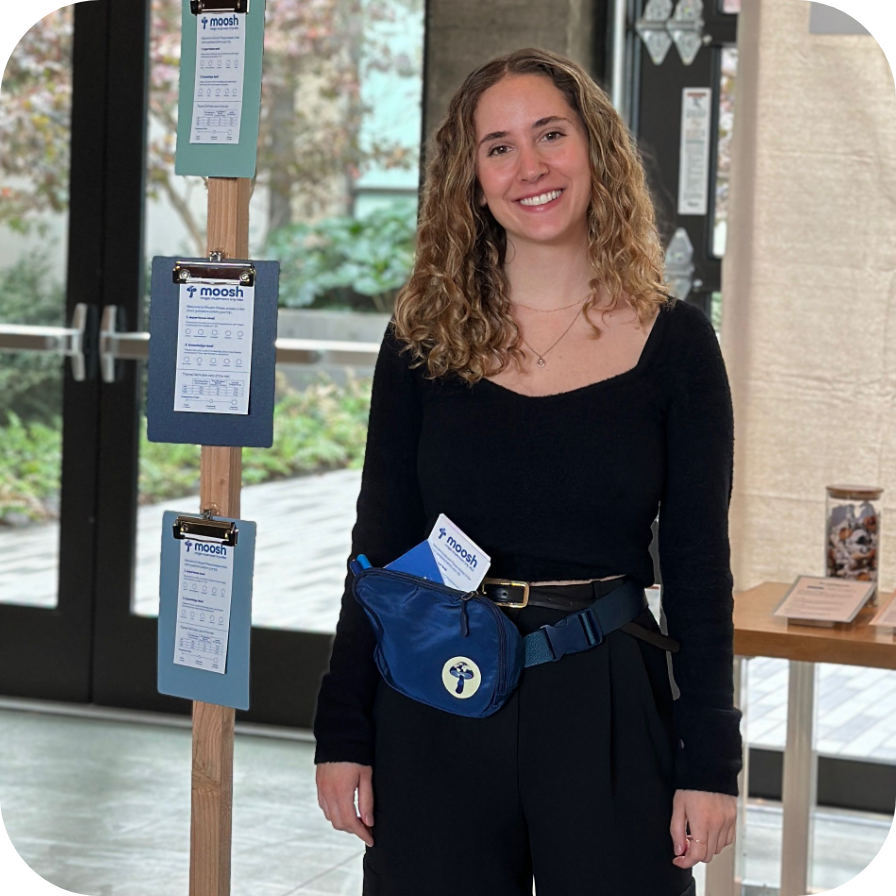 1. “Welcome to Moosh”
1. “Welcome to Moosh”
2. Filling out the survey
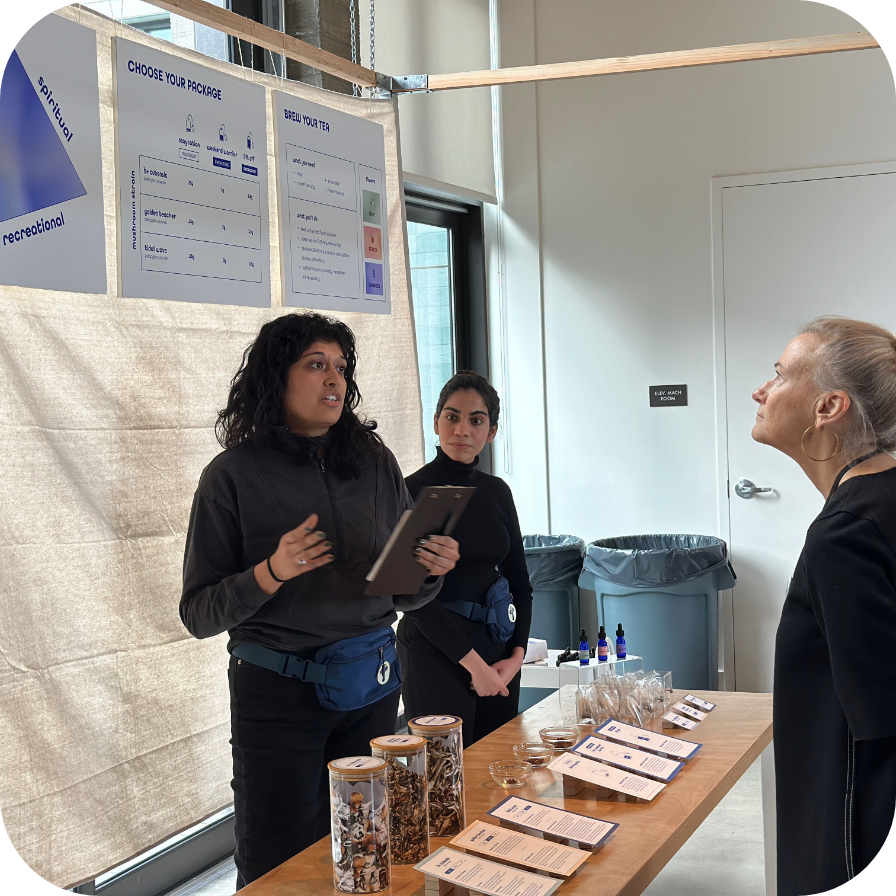
3. Planning your trip

4. Selecting strain
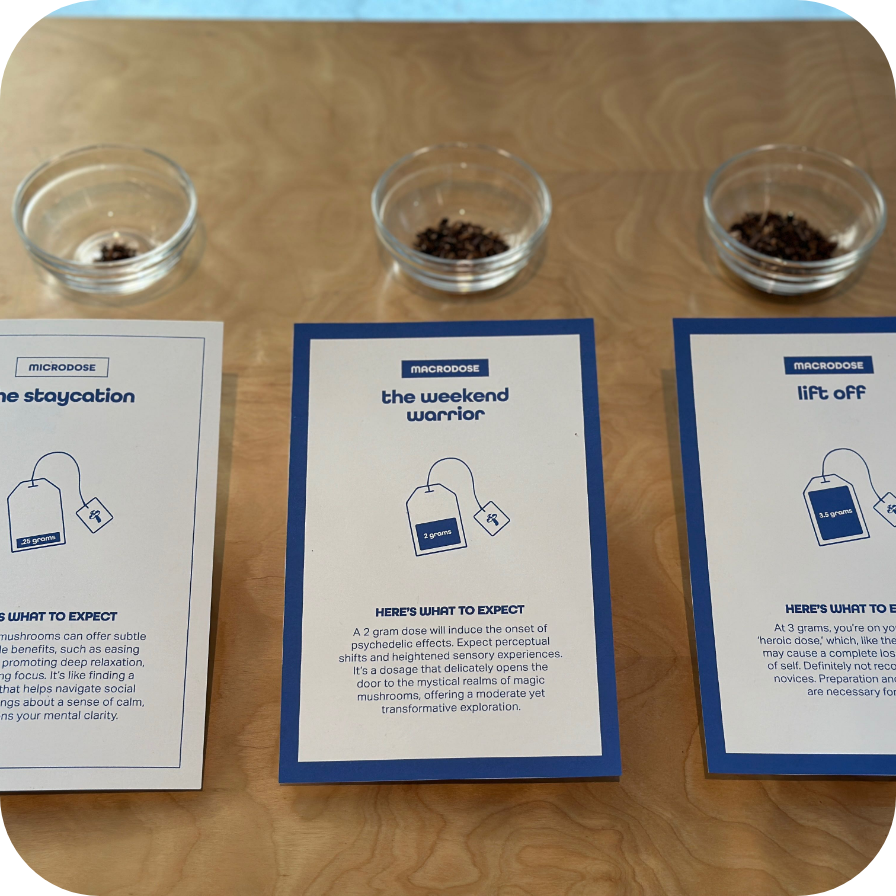
5. Selecting dosage

6. Selecting tea bag count

7. Selecting flavor extract

8. Consultation with Moosh Trip Guide using Moosh Passport

9. Stamp + “frequent flyer program”

10. Final trip kit

11. “We hope you enjoy your first trip”
 12. Extended experience: Microdosing tracker
12. Extended experience: Microdosing trackerResearch

Competitive Analysis
Cannabis dispensory
Supplement store
Spice shop
Supermarket

Interviews
Spiritual Forager
Entrepreneur
Medicinal User
Novice User

Dimensioning
Framework Formation
Challenge Statement
Storyboard
By Savithri Valega
Concepts

Tunnel + Pods
“Alice in Wonderland” welcome tunnel
Experience pods.

Trip Sitter
AI powered silicone mushroom “Trip Sitter” with safety features like emergency contacts, location finder, breathing exercises.

Tea House
“You-pick” mushroom selection process
On-site magic mushroom tea ceremony.
Micropilot
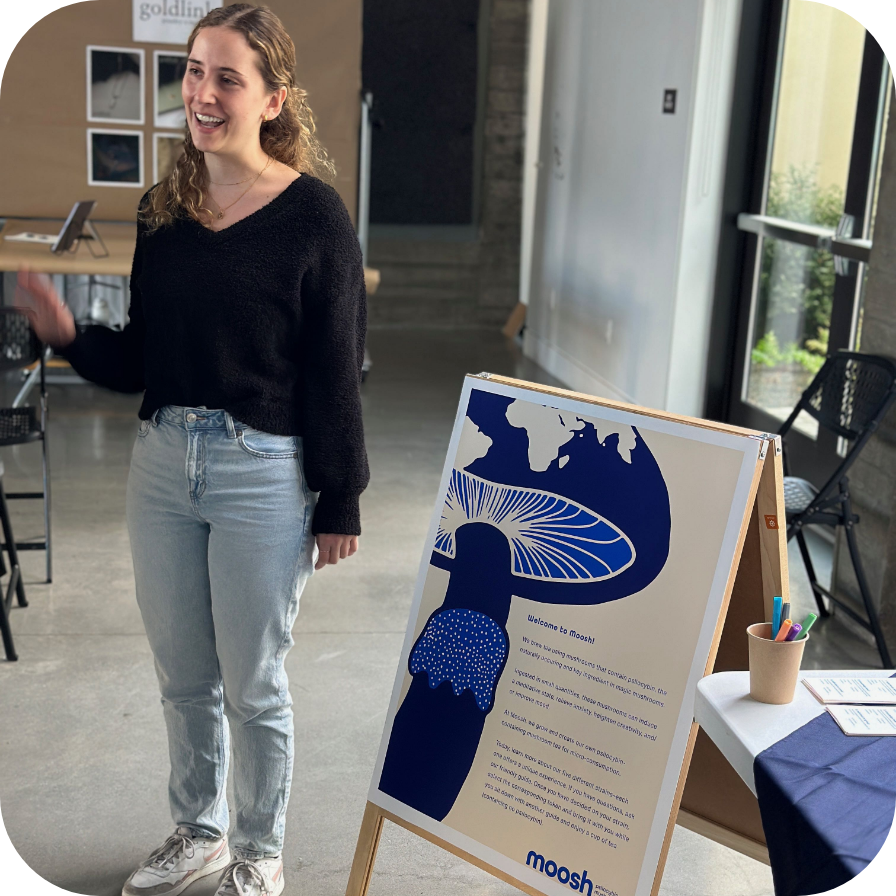
Greetings
Testing user knowledge of psyilocybin mushrooms.
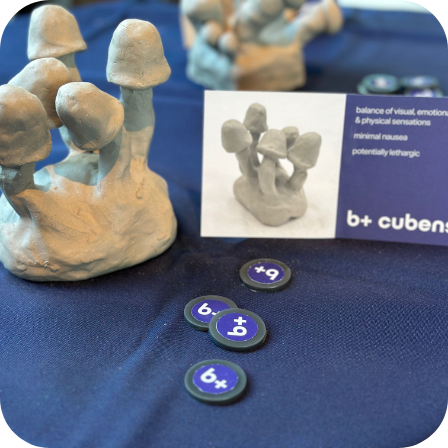
A Lot to Learn
Testing the educational and user experience.
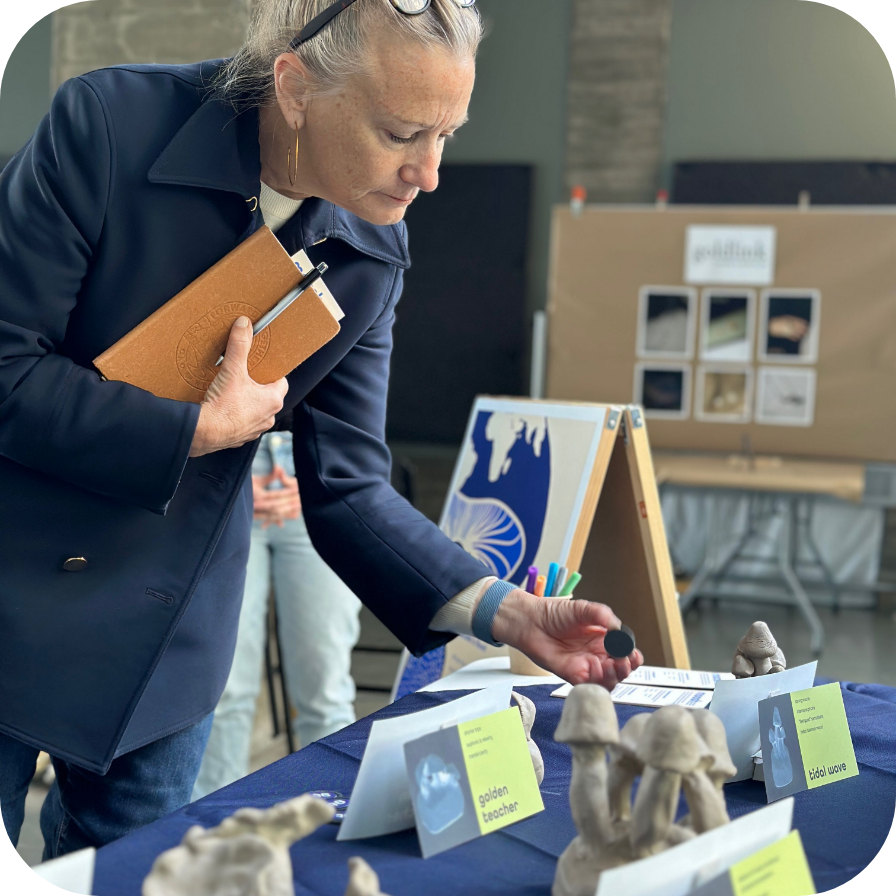
The Forager
Testing the “U-Pick” experience.
Journey Map
By Bhumika Ahuja
Entice
Participant invited to Moosh Grand Openning via social media.
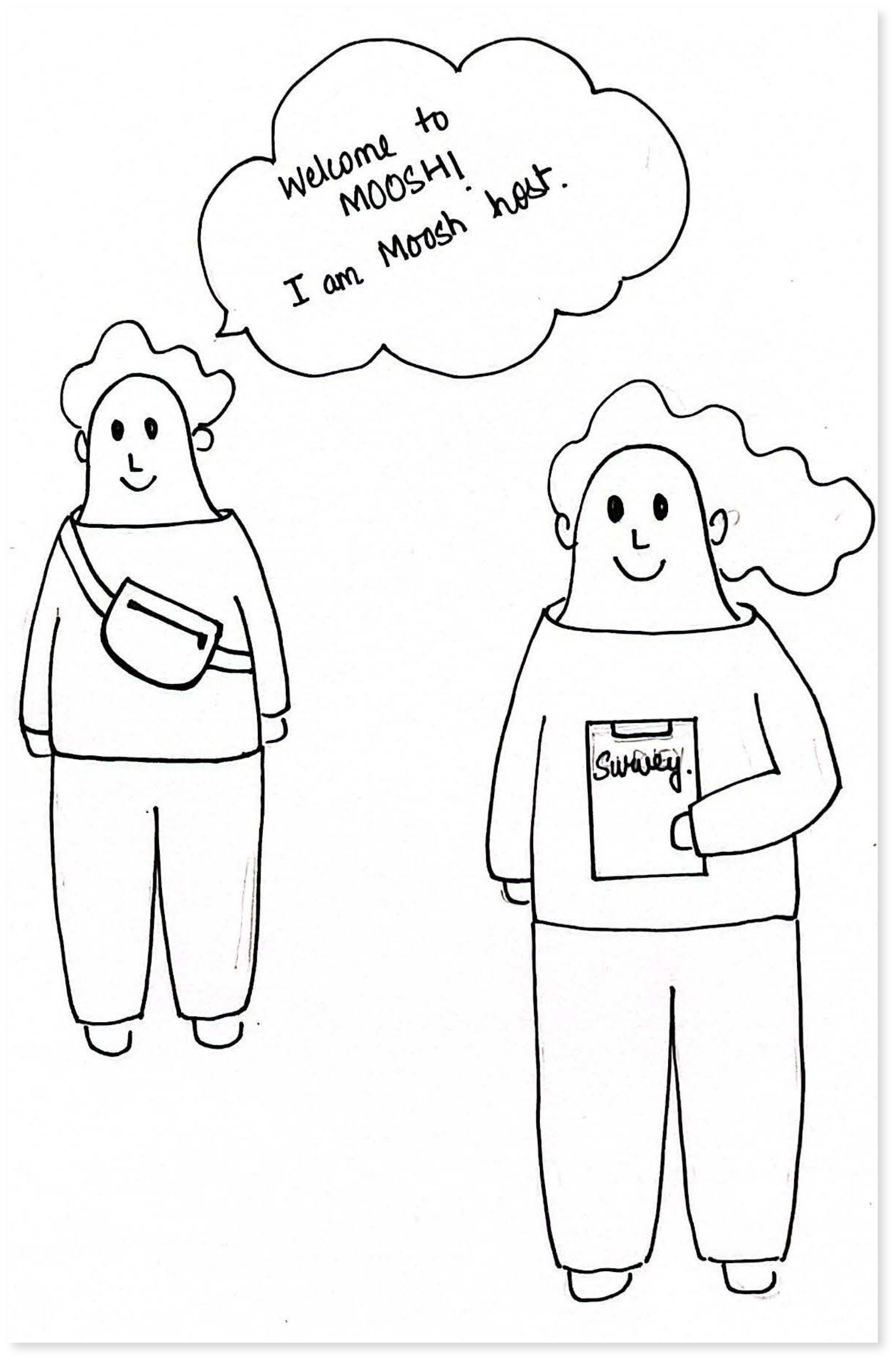
Enter
Participant completes survey measuring psilocybin knowledge.

Engage
Participant selects the strain, dosage, and tea flavor.

Exit
Participant experiences an educational consult with Moosh Trip Guide.

Extend
Participant engages with Moosh Passport.